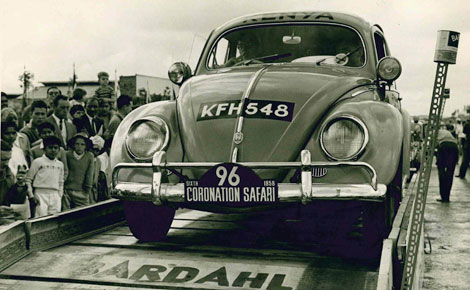×
The Standard e-Paper
Fearless, Trusted News
 |
| One of the vehicles that participated in the 1953 Coronation Safari. |
By Joseph Karimi
Kenya: To celebrate the Coronation of Queen Elizabeth on June 2, 1953 at the Westminster Abbey, a small group of local European motor sport enthusiasts organised the first motor rally dubbed ‘The Coronation Safari’ to become the precursor of the world famous motor sport; the Safari Rally.